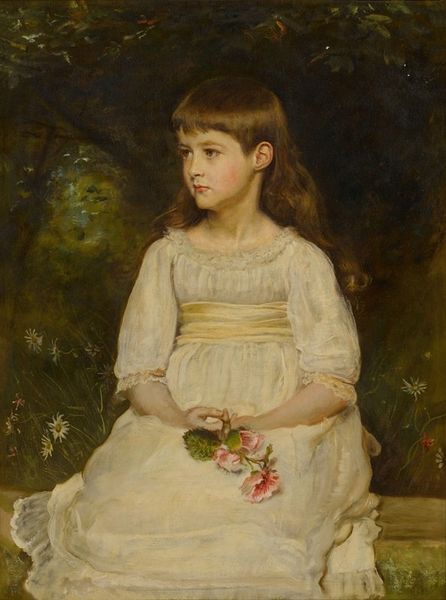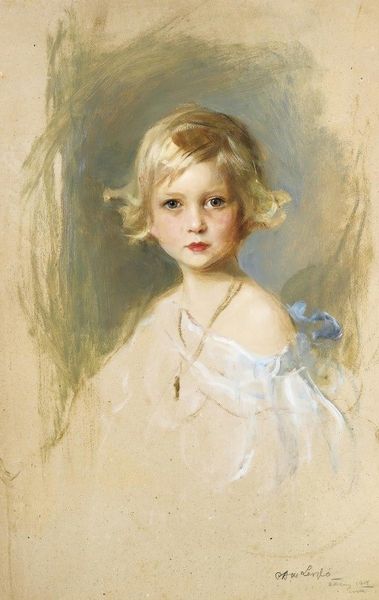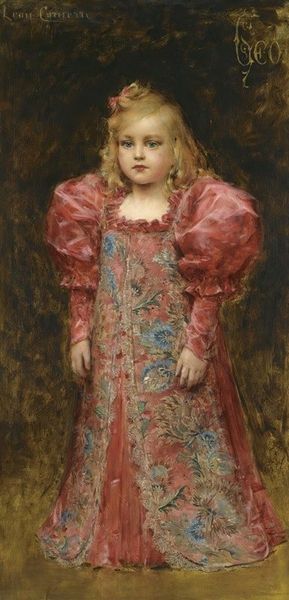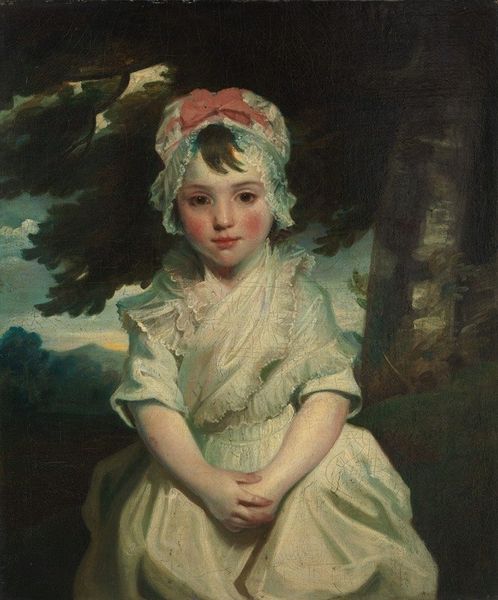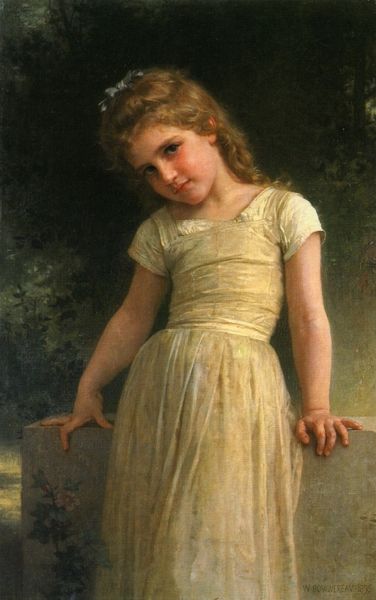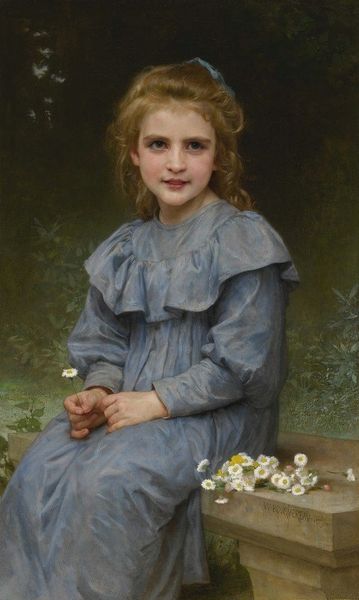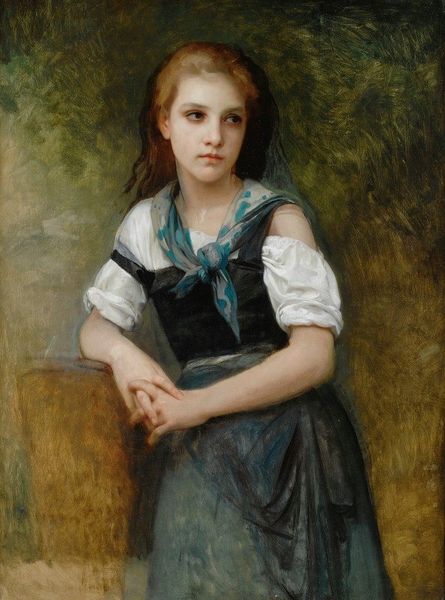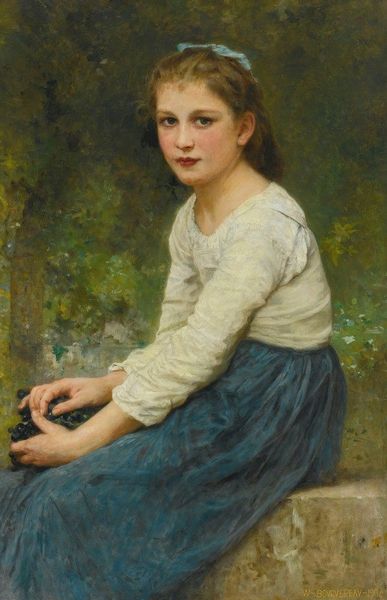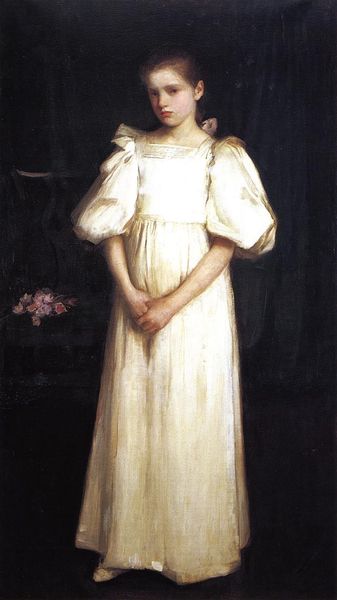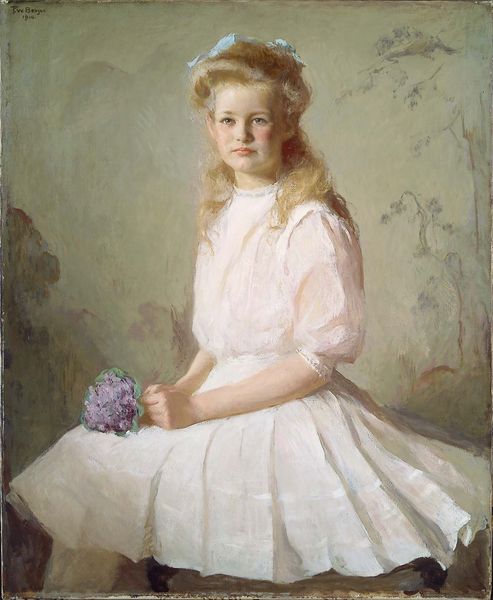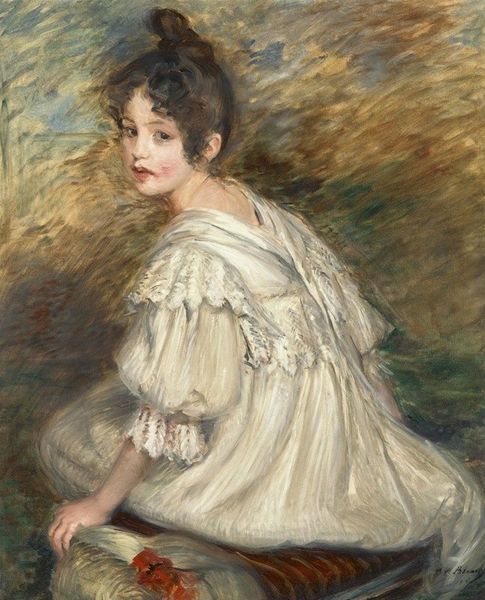
Copyright: Public Domain: Artvee
Sir John Everett Millais painted this portrait of Dorothy Lawson in the late 19th century, capturing her innocence in oil on canvas. The pure white dress, cinched with a gold sash, along with the cornflowers Dorothy delicately clutches, resonates with symbols of innocence and purity. These elements invite us to consider how artists across time have used similar symbols to evoke certain emotions and ideas. Consider Botticelli's Venus, draped in sheer fabric, a symbol of purity, or how, centuries later, the Pre-Raphaelites, including Millais himself, revived this imagery to express moral virtue. The flowers, however, are most fascinating. Scattered on the ground, they bring to mind Ophelia's tragic association with flowers, connecting childhood innocence with vulnerability. These recurring images reveal the powerful, often subconscious ways symbols persist, echoing through history, engaging us on an emotional level. The innocent figure of Dorothy Lawson remains, in her white dress, a potent symbol, forever caught in the cyclical dance of cultural memory.
Comments
No comments
Be the first to comment and join the conversation on the ultimate creative platform.
